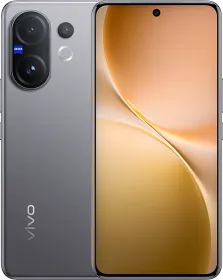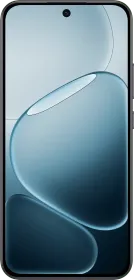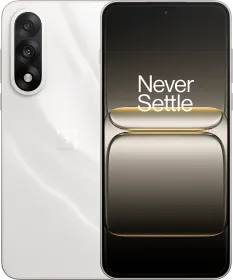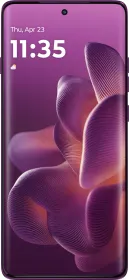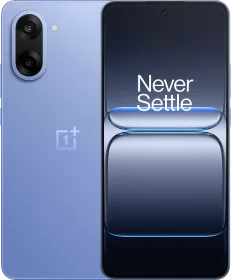The air in Delhi isn’t just “polluted” anymore—it’s toxic.
“Delhi’s air has reached toxic levels, with PM2.5 and volatile organic compounds (VOCs) penetrating deep into the lungs and bloodstream,” says Dr. Rohit Caroli, a leading pulmonologist in the city. “Such pollution doesn’t just irritate the throat or eyes, it silently accelerates asthma, COPD, heart disease, and even increases the risk of strokes and lung cancer.”
This isn’t just a seasonal inconvenience; it’s a public health crisis happening inside your home.
When stepping outside requires an N95 mask, you need to ensure the air you breathe indoors is safe. But not all air purifiers are created equal. Many are designed for light dust or pollen, not the severe, particle-dense smog and VOCs that Dr. Caroli warns about.
We’ve focused this guide specifically on models with the filters, fans, and features built to handle the unique challenge of Delhi-NCR’s air. We’ve handpicked 10 purifiers that truly perform, evaluating each for its cleaning power, filter quality, long-term cost, and suitability for different room sizes.
Jump To:
How to Buy an Air Purifier for Delhi/NCR
Before you buy, understand these five things.
- Look for “True HEPA H13” (or H14). This is non-negotiable. Don’t fall for vague labels like “HEPA-type” or “HEPA-like.” A True HEPA H13 filter is a medical-grade standard certified to capture 99.97% of those microscopic PM2.5 particles. H14 is even better (99.995%), but H13 is the gold standard for home use.
- PM2.5 Is Only Half the Battle. You Need Carbon. Delhi’s air is also full of gases and VOCs from traffic fumes, industrial smoke, and indoor sources like paint and cooking. A HEPA filter cannot stop these. For that, you need a thick Activated Carbon filter. A thin, dusty “carbon-coated sheet” won’t work; look for a filter with substantial carbon pellets.
- The “CADR” Is the Only Spec That Matters for Power. CADR stands for Clean Air Delivery Rate. This number (measured in m³/h) tells you how much clean air the purifier can pump out.
- Don’t just trust the “room size” a brand advertises (e.g., “up to 500 sq. ft.”). This is often a marketing-driven number.
- Do look at the CADR. For a high-pollution zone like Delhi, you want a purifier that can “clean” all the air in your room at least 3-4 times per hour. A model with a 400 m³/h CADR is a great fit for a standard 250 sq. ft. bedroom. When in doubt, buy a purifier that is oversized for your room.
- Know the True Cost of Ownership. The machine is a one-time purchase, but the filters are a recurring cost. A powerful purifier is useless if its replacement filters cost ₹8,000 or are impossible to find. We’ve noted filter costs where possible.
- Don’t Trust “Auto Mode” to Save You. Most purifiers have an “Auto Mode” that uses a small sensor to “sniff” the air and adjust the fan speed. This is a great idea, but the sensor is in one spot. It can’t possibly know the air quality in the corner where your child sleeps. On high-smog days, don’t rely on it. Trust your own senses and run the purifier on a manual (medium or high) setting for an hour to get the air clean, then switch to a quieter mode
Best Air Purifiers for Large Living Rooms & Halls
These are built for large, open-plan spaces 400 sq. ft. and above. When the AQI crosses 400, you need serious air-cleaning muscle.
1. SHARP FX-S120M-H

Best for: Huge (900+ sq. ft.) open-plan living rooms or small offices.
The Good: This is an industrial-strength machine. With a massive 702 m³/h CADR, it’s one of the most powerful home units you can buy. It’s built for those “Hazardous” AQI 500+ days. Its main weapon is a True HEPA H14 filter—a medical-grade standard—paired with Sharp’s Plasmacluster Ion tech, which actively neutralizes airborne microbes and static. Its full suite of sensors (including TVOC for gases) means its “Auto” mode is smarter than most.
The Catch: It’s a beast in size, and the replacement filters are expensive. You’re paying a serious premium for its power and H14-grade filtration.
How it Lives: Despite its power, it’s surprisingly quiet. Sleep mode is a barely-audible 23dB, so it won’t disturb you. On “Max” (55dB), it’s loud but clears a room fast. The AIoT app is a solid bonus for remote control. It’s built like a tank, so place it where it can stay.
| Specification | SHARP FX-S120M-H |
| CADR (Particles) | 702 m³/h |
| Filter Type | H14 HEPA, Active Carbon, Plasmacluster |
| App Control | Yes (AIoT) |
| Air Quality Sensor | Yes (PM2.5, TVOC, Temp, Humidity) |
| Real-Time Display | Yes (Numeric PM2.5 & Gas) |
| Noise Level | 23dB (Sleep) – 55dB (Max) |
| Filter Life | Up to 2 years |
| Approx. Filter Cost | ~₹8,490 (for the set) |
2. Samsung AX7000 (AX70J7000WT/NA)
Best for: Large living rooms (up to 1,000 sq. ft.) where you need to clean the air fast.
The Good: This Samsung is all about speed. It delivers a certified CADR of 773 m³/h, one of the highest on the market. It uses dual fans to pull in polluted air from two sides and blasts clean air out in three directions, rapidly cutting down hazardous AQI levels. Its sensors are also excellent, giving you separate numeric readouts for both PM10 (large dust) and PM2.5 (fine smog).
The Catch: It’s a tall, bulky machine. While it has a “Sleep Mode,” it’s not as quiet as the Coway or Sharp models, and at max speed (54dB), you’ll hear it. Its filter life isn’t as clearly advertised as others.
How it Lives: This is a set-it-and-forget-it powerhouse. It connects to the SmartThings app, which is one of the best smart-home apps available. You can control it from your phone or set it on “Auto” and let the dual sensors do the work. The digital display is crystal clear and a data-lover’s dream.
| Specification | Samsung AX7000 |
| CADR (Particles) | 773 m³/h |
| Filter Type | H13 HEPA, Activated Carbon, Pre-Filter |
| App Control | Yes (SmartThings) |
| Air Quality Sensor | Yes (PM10, PM2.5, Gas) |
| Real-Time Display | Yes (Numeric PM10, PM2.5) |
| Noise Level | “Quiet” (Sleep) – 54dB (Max) |
| Filter Life | Approx. 1 year |
| Approx. Filter Cost | ~₹3,800 (for the set) |
3. Honeywell Air Touch U2
Best for: Users who want to throw every possible technology at the problem.
The Good: The U2 is a feature-packed beast. It’s 650 m³/h CADR handles 800 sq. ft. rooms, but its real story is the 7-stage filtration. It combines a True HEPA H13, Activated Carbon, and a UV sterilization lamp. This layered approach attacks everything: PM2.5, VOCs, odors, and germs. It’s also fully app-enabled for remote control.
The Catch: The 7-stage system is complex, and the full set of replacement filters is very expensive (over ₹8,000). At full speed (59dB), it’s one of the loudest models on this list.
How it Lives: This is a large unit that makes a statement. Its touch panel is responsive, and the app works well. In a bedroom, its “Sleep Mode” is a perfectly acceptable 38dB. You buy this if you believe in the “more is more” approach to filtration and want that extra (and optional) UV and ionizer protection.
| Specification | Honeywell Air Touch U2 |
| CADR (Particles) | 650 m³/h |
| Filter Type | 7-Stage (H13 HEPA, Carbon, UV, etc.) |
| App Control | Yes |
| Air Quality Sensor | Yes (PM2.5) |
| Real-Time Display | Yes (Numeric PM2.5) |
| Noise Level | 38dB (Sleep) – 59dB (Max) |
| Filter Life | ~3,000 hours (Approx. 1 year) |
| Approx. Filter Cost | ~₹8,400 (for the set) |
4. Qubo Q1000
Best for: Getting maximum CADR-for-your-rupee in a large space.
The Good: The Qubo Q1000 proves you don’t need to spend a fortune for power. It delivers a 600 m³/h CADR, easily enough for a 750 sq. ft. living room, at a very competitive price. It has the essentials: a True HEPA H13 filter, an Activated Carbon layer, and a clear PM2.5 display. Its best feature? An incredible 15,000-hour filter life, which means minimal running costs.
The Catch: At full “Turbo” speed (57dB), it’s quite loud. The build quality is functional and plastic-heavy, not premium like a Coway.
How it Lives: It’s a simple, effective appliance. The app control is a nice bonus at this price. While it lacks a specific dB for sleep, its “Sleep Mode” is described as “whisper-quiet” and is perfectly fine for a bedroom. This is a no-nonsense workhorse for a large room.
| Specification | Qubo Q1000 |
| CADR (Particles) | 600 m³/h |
| Filter Type | 4-Layer (H13 HEPA, Carbon, Ionizer) |
| App Control | Yes |
| Air Quality Sensor | Yes (PM2.5) |
| Real-Time Display | Yes (Numeric PM2.5) |
| Noise Level | “Whisper-quiet” (Sleep) – 57dB (Max) |
| Filter Life | 15,000 hours |
| Approx. Filter Cost | ~₹4,990 |
Best Air Purifiers for Medium to Large Rooms
These strike the perfect balance between power, price, and practicality, ideal for bedrooms, offices, or smaller living rooms (250–400 sq. ft.). They deliver strong CADR ratings and efficient filtration without breaking the bank.
5. Sharp FP-J80M-H
Best for: Health-conscious users and large bedrooms (up to 450 sq. ft.).
The Good: This Sharp brings high-end tech to a smaller package. It features a True HEPA H14 filter (a step above H13) and the signature Plasmacluster Ion system. With a strong 480 m³/h CADR, it’s a powerful and technically advanced option. Its best feature is the noise: at 15dB on “Sleep,” it is genuinely silent and the best choice on this list for light sleepers.
The Catch: It’s not a “smart” purifier; there’s no app control. The replacement filter set (H14 + Carbon) is expensive, costing as much as the set for its much larger sibling.
How it Lives: This is an elegant, quiet, and effective machine. You set it on “Auto” and let its multiple sensors (including dust and odor) manage the fan speed. Its “Sleep Mode” is so quiet you will have to check if it’s on.
| Specification | Sharp FP-J80M-H |
| CADR (Particles) | 480 m³/h |
| Filter Type | H14 HEPA, Active Carbon, Plasmacluster |
| App Control | No |
| Air Quality Sensor | Yes (PM2.5, Dust, Odor, Light) |
| Real-Time Display | Yes (Numeric PM2.5) |
| Noise Level | 15dB (Sleep) – 47dB (Max) |
| Filter Life | Up to 2 years |
| Approx. Filter Cost | ~₹8,500 (for the set) |
6. Coway AirMega 250 (AP-1720B)
Best for: A “set it and forget it” machine for a 400 sq. ft. room.
The Good: The AirMega 250 is a design-forward workhorse. Its AHAM-verified CADR of ~444 m³/h is perfect for medium-large rooms. Its real magic is its dual-sensing “Smart Mode.” It has separate sensors for particles and gas (VOCs) and will independently crank up the fan when you’re cooking or when smog rolls in. The build quality is exceptional.
The Catch: This is the non-smart model (the 250S has Wi-Fi). It’s also noisy at its highest speeds (59dB). Replacement filters are expensive and often have to be imported, which is a significant hassle.
How it Lives: It’s a beautiful, slim purifier that blends into your decor. The color-coded LED bar gives you an at-a-glance air quality check. You put it on “Smart Mode” and it does its job perfectly without any app fuss.
| Specification | Coway AirMega 250 |
| CADR (Particles) | ~444 m³/h (AHAM verified) |
| Filter Type | H13 HEPA + Carbon (Max2 Filter) |
| App Control | No |
| Air Quality Sensor | Yes (Particle & Gas) |
| Real-Time Display | Yes (Color LED Bar) |
| Noise Level | 35.7dB (Sleep) – 59.3dB (Max) |
| Filter Life | ~1 year |
| Approx. Filter Cost | ~₹9,125 (Often imported) |
7. Coway AirMega Storm (AP-1220B)
Best for: All-around performance and low maintenance in a large bedroom (up to 575 sq. ft.).
The Good: This is a cult favorite for a reason. It combines a medical-grade H14 filter with Coway’s signature 8,500-hour filter life. That means you might only buy a new filter every 2-3 years, a massive long-term saving. It’s also whisper-quiet at 22dB on sleep.
The Catch: For some reason, Coway does not publish an official CADR number. This is frustrating, but its real-world performance and coverage for a 575 sq. ft. room are widely verified. It’s also quite bulky.
How it Lives: This is the ultimate low-maintenance bedroom purifier. It has a unique dual-airflow system to circulate air. It’s built like a tank, is incredibly quiet, and you don’t have to worry about buying filters for years. Its H14 filter and 8,500-hour life are an unbeatable combination.
| Specification | Coway AirMega Storm |
| CADR (Particles) | Not Officially Specified |
| Filter Type | H14 HEPA, Active Carbon, Pre-Filter |
| App Control | No |
| Air Quality Sensor | Yes (4-Color LED) |
| Real-Time Display | Yes (Color LED) |
| Noise Level | 22dB (Sleep) – 49dB (Max) |
| Filter Life | 8,500 hours |
| Approx. Filter Cost | ~₹4,999 (for the set) |
Best Air Purifiers for Small to Medium Rooms
These purifiers excel in quieter, more enclosed spaces such as bedrooms, study rooms, or guest rooms of 150-250 sq ft. In Delhi NCR, where night-time pollution still lingers and you want restful sleep without sacrificing air quality, these models strike the best balance of power, quiet operation, and space-appropriate design.
8. LG PuriCare AS60GDWT0
Best for: Tech-savvy users who want the best data and a 360° design.
The Good: The LG PuriCare is a premium, smart machine. It has a unique 360° design that pulls in air from all sides and a “Clean Booster” fan that rises and oscillates to push clean air across the room. Its PM1.0 sensor is more sensitive than the standard PM2.5, detecting even smaller ultra-fine particles. Its ThinQ app is excellent.
The Catch: The official replacement filters are notoriously hard to find and the pricing is very unclear. You’ll likely have to contact LG service directly, which is a major hassle. It’s a premium product with premium (and confusing) running costs.
How it Lives: It looks like a piece of modern art. The 360° intake means it can be placed almost anywhere (it still needs some space). The smart sensor and app integration are for people who want to see the data and control everything from their phone.
| Specification | LG PuriCare AS60GDWT0 |
| CADR (Particles) | 430 m³/h |
| Filter Type | 360° HEPA Filter, Carbon Filter |
| App Control | Yes (Smart ThinQ) |
| Air Quality Sensor | Yes (PM1.0 Smart Sensor) |
| Real-Time Display | Yes (Color-coded) |
| Noise Level | “Quiet” (Sleep) – 52dB (Max) |
| Filter Life | ~4,100 hours (Approx. 1 year) |
| Approx. Filter Cost | Varies (Must contact LG) |
9. Xiaomi Smart Air Purifier 4

Best for: The perfect balance of power, price, and smarts for a 300 sq. ft. room.
The Good: This is the default choice for many, and for good reason. It delivers a solid 400 m³/h CADR at a great price. Its killer feature is the real-time PM2.5 number on its OLED display, giving you instant peace of mind. The Mi Home app is excellent and integrates with Google Assistant and Alexa.
The Catch: At full speed (64dB), it is very loud. The 3-in-1 filter (HEPA + Carbon combined) means the carbon layer isn’t as thick as on a separate filter, making it less effective against heavy VOCs.
How it Lives: This is the perfect bedroom machine. On ‘Sleep’ mode (32.1dB), it’s very quiet, and the display can be dimmed. Maintenance is a breeze: the app tells you when to change the filter, and the 3-in-1 cartridge is affordable and easy to swap.
| Specification | Xiaomi Smart Air Purifier 4 |
| CADR (Particles) | 400 m³/h |
| Filter Type | H13 HEPA + Carbon (3-in-1) |
| App Control | Yes (Mi Home) |
| Air Quality Sensor | Yes (PM2.5, Temp, Humidity) |
| Real-Time Display | Yes (OLED Numeric PM2.5) |
| Noise Level | 32.1dB (Sleep) – 64dB (Max) |
| Filter Life | 6-12 months |
| Approx. Filter Cost | ~₹3,499 |
10. Coway AirMega 150 (AP-1019C)
Best for: Style and low-maintenance in a bedroom (up to 250 sq. ft.).
The Good: This is Coway’s most popular model because it’s beautiful, effective, and built to last. Its 8,500-hour filter life is its key selling point, meaning you won’t think about filters for 2-3 years. It’s also exceptionally quiet, at 22dB on sleep. The filter-change indicator is a simple, foolproof light.
The Catch: It’s a “dumb” purifier. There’s no app and no numeric display—just a 4-color LED light to show air quality. Its 303 m³/h CADR is perfect for a bedroom but will be undersized for a living room.
How it Lives: It’s compact, stylish, and comes in multiple colors. You plug it in, set it to “Auto,” and forget it exists for two years. This is the ultimate purifier for someone who doesn’t want to fuss with apps or data and just wants clean, quiet air.
| Specification | Coway AirMega 150 |
| CADR (Particles) | 303 m³/h |
| Filter Type | H13 HEPA, Active Carbon, Pre-Filter |
| App Control | No |
| Air Quality Sensor | Yes (Air Quality) |
| Real-Time Display | Yes (4-Color LED) |
| Noise Level | 22dB (Sleep) – 49dB (Max) |
| Filter Life | 8,500 hours |
| Approx. Filter Cost | ~₹5,399 (for the set) |

The Bottom Line: Your Lungs Will Thank You
Ultimately, there is no single “best” air purifier for everyone. The best machine is the one that’s right for your space and your budget.
Trying to clean a large living room with a small, underpowered bedroom purifier is a waste of money—it simply can’t keep up with the sheer volume of air. Be honest about your room size and invest in the CADR (Clean Air Delivery Rate) you actually need.
If you have a massive hall, you need the raw power of a high-CADR machine like the Samsung AX7000 or Qubo Q1000. For a bedroom, your priority should be the ultra-quiet operation and long-term filter life of a model like the Coway AirMega 150 or the Sharp FP-J80M-H.
The most important step isn’t just buying one—it’s running it. As Dr. Caroli made clear, Delhi’s air is not a temporary problem; it’s a chronic health risk. Choosing a purifier with a True HEPA H13/H14 filter for particles and a thick activated carbon filter for gases is one of the most effective, practical investments you can make for your family’s health.
You can follow Smartprix on Twitter, Facebook, Instagram, and Google News. Visit smartprix.com for the latest tech and auto news, reviews, and guides.
























